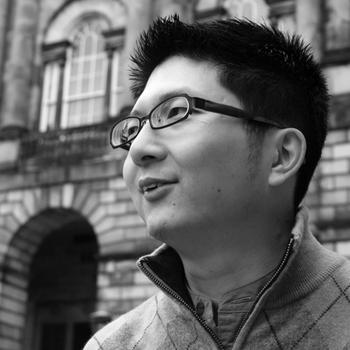Kimho Ip

Interweaving Performance Cultures
Fellow 2011/12, 2013/14
Born in Hong Kong, Kimho Ip has been living in Edinburgh since 1999. Currently the musical director of iMAP and musical curator for the Confucius Institute for Scotland, he taught a postgraduate course on music and interculture at the University of Edinburgh and in 2013 was a lecturer at the University of Hong Kong. He plays the Chinese dulcimer (Yang Ch’in), and, as a duo with Filip Davidse on soprano saxophone, has been invited to give concerts and talks at the Bimhuis, Amsterdam, the Southbank Centre, London, and Beijing Concert Hall. He curated multi-artform productions, including silent films with live music, that present modern China through performances, among them, Cathay House Blend at the National Museum of Scotland (2006); Cinema China (2007); Dialogues of Wind and Bamboo at the Royal Botanic Gardens, Edinburgh; and Requiem for Travellers (2010). As a composer, Kimho’s orchestral and chamber works have been showcased at the ISCM World New Music Days (2002/ 2007), the Edinburgh International Festival (2005) and the Gaudeamus in Amsterdam (2006).
Research Project
Re-contextualizing the representations of 1930s Shanghai
Between 2005 and 2011 I curated a series of cross artform performances in the UK. The interaction between Chinese-ness and European art music is illustrated by a centre-periphery model. Working against the idea that only the universal, common and shared is considered central, the emancipation of the implied value judgment of the centre-periphery model metaphorizes periphery as movements in performative action, both literally and allegorically, that question binary oppositions. The result is a kind of “contrapuntal reading” as suggested by Edward Said within the spectrum of national and global representations.
The panorama of representations of Shanghai from the 1920s and 30s reveals a transcultural and intertextual past, marking a time when the aesthetics of European modernism interacted with early Chinese modernity. Contrapuntal reading links the plurality of the sources of representation: the paces of women dressed in qipao, ballroom dance steps; the teahouse as a storytelling performance venue colliding with movie theatres showing early Chinese silent films employing Western cinematic techniques; the black-and-white performativity of traditional Chinese calligraphy juxtaposed with the cacophony of “Yellow Music.” Such an environment, allowing for a more dynamic dialectical centre-periphery relationship, was ephemeral. Subsequent political interventions resulted in an oversimplified and rigid dichotomy. Examples of productions that rediscover these moments of intercultural encounters in the 1920s and 30s reflect the discourses of power and knowledge as well as the challenge to substantiate re-contextualization as a peripheral movement for an alternative interpretation of the past.
Recommended Publications
- Barme, Geremie R. An Artistic Exile: A Life of Feng Zikai (1898-1975). Berkeley, Los Angeles, London: University of California Press, 2002.
- Jones, Andrew F. Yellow Music: Media Culture and Colonial Modernity in the Chinese Jazz Age. Durham and London: Duke University Press, 2001.
Recommended Listening
- Kimho, Ip, A New Voice to the Muted: Live Music for Chinese Silent Films. Friends of the Arts Museum Newsletter, The Chinese University of Hong Kong, April 2013, p.19. (Kimho Ip’s soundtrack for the film, “The Goddess” (1934), see www.skymapandrainbow.com)
